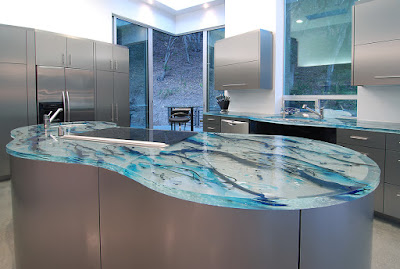Countertops are known by different names from around the world. They're also known as benchtop, worktop, kitchen bench and work surface. These are typically found in the kitchen and the lavatory, but in many workshops they're known as a workbench. These tops come in as many as 11 different variations. Let's look at the most popular ones in the market today.
Granite
This igneous rock was formed from the slow crystallization and solidification of magma as it rose to the Earth's upper crust. It is composed mainly of quartz and feldspar with minute amounts of other minerals. All of these combine to give granite its unique variety of colors; gray, pink, red or white with dark mineral grains visible which make it one of the most popular options.
Quartz
Also known as silicon dioxide or silica, this chemical compound has been known since ancient times. The most ancient name known for this compound was recorded by Theophrastus around 300 to 325 BC. This is the second most abundant mineral in the Earth's crust and is also used in structural materials, microelectronics and components in the food industry. An Internet search of "quartz vs granite" for countertops netted 101,000 results, which demonstrates its popularity.
Laminate
Lamination is the technique of manufacturing different items in multiple layers, also known as a composite material. This gives the finished item improved strength, stability, and appearance. Laminates are typically produced using heat, pressure, welding, and adhesives. A favorite during the groovy 60's and 70's, this process offers durability and style at a lower price than any other product. It comes in richly colored solids, midcentury patterns, and can also mimic rock patterns and rusted metal.
Solid Surface
This a man-made item usually composed of bauxite, acrylic and or polyester resins, marble dust, and pigments. It is used to form seamless surfaces. For interior use, this product is used in kitchens, floors, walls, bathrooms and workspaces. Applications also include displays, as in museums, hospital laboratories, meeting tables, facades and many more. It is non-porous, low maintenance and can mimic stone, wood, and other naturally occurring organics while being formed into a variety of shapes such as a sink or bathtub.
Ultra Compact Surfacing
This term describes a completely new type of production process made by combining raw materials found in glass, quartz, and porcelain using high heat and pressure to create an almost indestructible product. This new process was produced as an improvement to other countertops available. The overall main difference is the durability of this substance over other mediums.
Recycled
These tops are made from recycled glass, wood, paper, and Marmoleum, which make natural linoleum flooring that comes in sheets, tiles and click together planks. Hundreds of colors are available and it is non-toxic.
All countertops manufactured today are built with durability in mind while offering many different textures and colors. Visit your local dealer today to see what they have to offer.
Home /
Countertops /
decoration tips /
home /
home decor /
home improvement /
home tips /
interior /
interior design /
interior design ideas /
Kitchen /
kitchen design /
Let's Take A Look At The Most Popular Materials For Countertops










